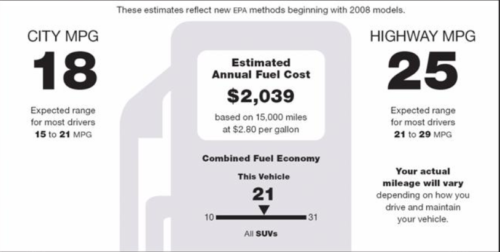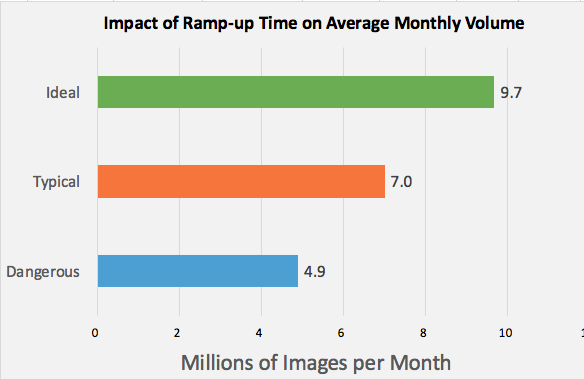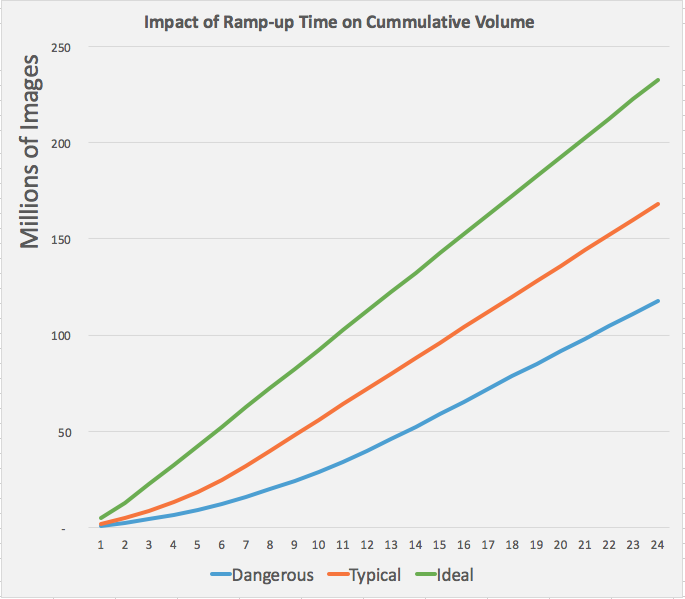 The economics of making money with inkjet are kind of like optimizing the miles per gallon you will get on a car. How fast do you drive? Is it on the highway? Are your tires well maintained? Except getting it right with inkjet is a lot more important. Total Cost of Ownership for production inkjet is not a simple topic. I’ve tried to make it more manageable by breaking it out into pieces. The first focused on capital and start-up costs, the second on operating costs (and cost drivers) and now we get to the hardest part, the assumptions that drive everything else.
The economics of making money with inkjet are kind of like optimizing the miles per gallon you will get on a car. How fast do you drive? Is it on the highway? Are your tires well maintained? Except getting it right with inkjet is a lot more important. Total Cost of Ownership for production inkjet is not a simple topic. I’ve tried to make it more manageable by breaking it out into pieces. The first focused on capital and start-up costs, the second on operating costs (and cost drivers) and now we get to the hardest part, the assumptions that drive everything else.
Assumptions are the Hardest Part of Economics
I say that assumptions are the hardest part because even little things become complicated. Small differences in assumptions can have what seems like a disproportionately large impact on the cost of a solution. Once those trade-offs are understood, it often becomes necessary to look at multiple options to see how changing assumptions in one area affects the overall results. For example, let’s say you aren’t to the point of comparing different equipment yet, but just looking at whether you should be considering inkjet. There are some assumptions that will dramatically impact that evaluation:
- The volume that you are certain will be ready to run on inkjet
- Whether that is new volume, transitioned volume that sunsets another device or transitioned volume that cannibalizes another device without sunsetting
- How quickly the volume comes on line
- The value of that volume in terms of potential up-charge in prices to customers and/or cost savings that accrue to you
- The level of uniformity across that volume (more similar is more cost effective)
Those are just a handful of non-technical assumptions, but they are huge from an inkjet economics standpoint. There has been a rule of thumb that production inkjet can’t be justified at less than 5 million impressions per month however, there are high value applications where time to market or the ability to personalize can make the case with under 3 million impressions. There are also entry level machines on the market that bring the volume threshold to well under 4 million for device appropriate applications. On the other hand, you might think that a company with 10 million images per month could easily justify inkjet. Often that’s true, but if it takes 2 years to transition the volume while keeping other platforms running it is not nearly as attractive as a 3 month clean cutover. You can probably find a device that is generally a fit for your target volumes – the big question is how fast can you get those volumes up and running on that device?
Figure 1 below shows the impact on average monthly volumes over 2 years when the time to transition jobs takes 14 months, 8 months and 3 months respectively. Under most circumstances, a very well planned inkjet implementation can transition target volumes in 3 months or less. A time frame of 6 to 8 months is more typical, and a timeline of over a year is dangerous. Yep, DANGEROUS. A company that created a business case for inkjet based on 10 million monthly impressions and is only delivering an average of 4.9 million impressions after two years is probably under water on their investment.
Time is Money

Figure 1 – Target Volume is 10 Million Images per Month
…And the effect is cumulative
Even when your monthly number is finally up where you want it -it’s very hard to make up for lost time. Using the same timeframes as the example above, Figure 2 shows the impact of a delay in transitioning jobs on cumulative 24 month volume. The challenges posed by transition delays become even more pronounced when it results in a delay in retiring other equipment. Timing assumptions should not be made lightly. Understand the time, resources, software and professional services that will be needed to transition volumes as quickly as possible.

Figure 2
Since assuming is the word of the day for this post, let’s assume that a transition to inkjet is financially justified and your economic analysis focus is on choosing the right solution. The definition of that solution will impact many of the assumptions above because the robustness of the device, supporting software and options will impact how much business you can transition and how quickly. It will also impact your potential to sell new types of business. The flexibility you gain through software and finishing choices can allow otherwise differentiated jobs to run on the same device – like checks and statements. Options like coating systems may enable more jobs to run on the same paper. Every decision point potentially impacts one or more cost drivers.
One of my clients told me he had talked to four different OEMs and they all told him something different and he was pretty sure that they were all telling him the truth. I’m pretty sure they were too. The problem was that the client didn’t really know what he needed, so everything sounded really good. And, again, it probably is really good – for someone. Just not necessarily for that client. And that’s the point of part 3 in this series: if you don’t start with the right assumptions about your business, you won’t end up with the right solution.
Next time I’ll talk about a bunch of assumptions you will need to make, why people are really bad and making them, and ways we can do it a little better. Speaking of bad assumptions – I thought I could finish this series in 3 parts and I’m not even close. Sigh. Meanwhile, if the ability to transition volumes quickly is one of your concerns with investing in inkjet – check out this post on Essential Services for Inkjet.
Thanks for reading.
Elizabeth
P.S. If you think my advice is good, share it with a friend.
If you don’t, share it with a competitor. Win – Win.
